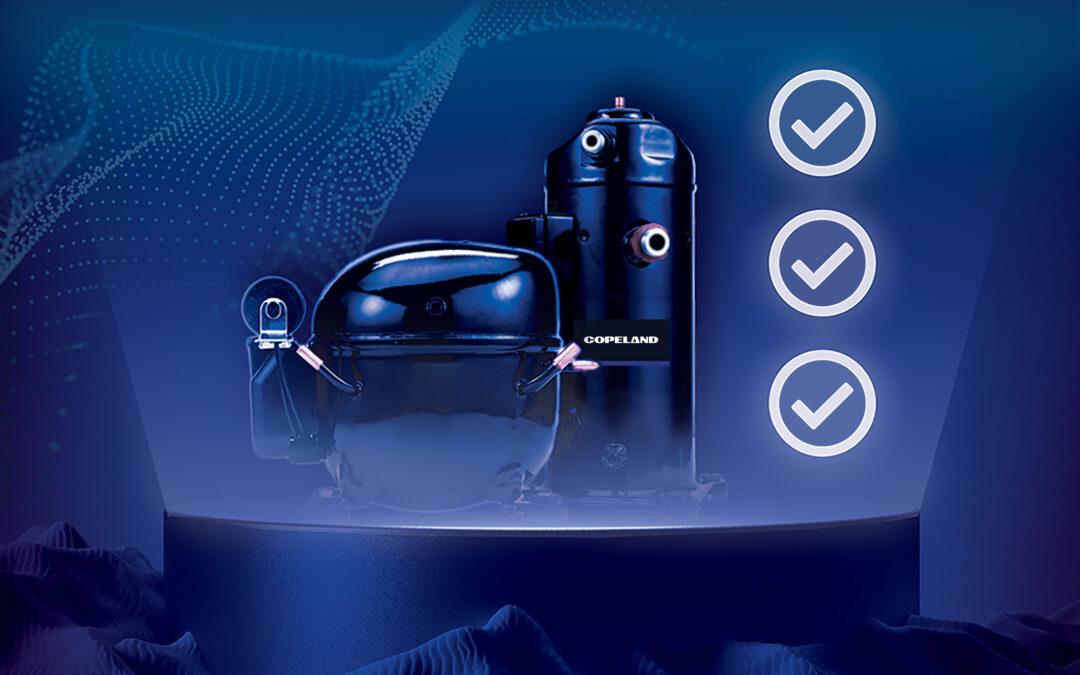*On June 1, 2023 Emerson’s Climate Technologies business became a new standalone company – Copeland. Though our name has changed, we are building on more than a century of HVACR innovation and industry leadership, and Copeland continues to offer the same products, industry stewardship, and learning opportunities you’ve grown to trust. Information found on this webpage posted before June 1, 2023 may contain our old name or branding, but you can be at ease knowing it was created with the knowledge and expertise of Copeland.
Emerson recently participated in the Atmosphere America online conference, where commercial refrigeration industry stakeholders discussed the ongoing transition from hydrofluorocarbon (HFC) refrigerants to those with lower global warming potential (GWP). Dr. Rajan Rajendran, Emerson’s vice president of system innovation center and sustainability, and I were speakers at the event; ACHR The News reported on our thoughts on the topic in a recent article.

Recapping recent events that impacted refrigerant rulemaking
To recap the activities regarding U.S. federal refrigerant regulations, I explained how these policies have faced many legal headwinds over the past few years. These began in 2017, when in response to a court challenge, a federal court vacated the Environmental Protection Agency’s (EPA) Significant New Alternatives Policy (SNAP) Rule 20 on the basis that the EPA didn’t have authority to regulate non-ozone depleting substances. If you remember, SNAP Rules 20 and 21 had been adopted on the basis of reducing global warming by phasing down the use of higher-GWP HFCs in some commercial and air conditioning equipment.
In response to the court’s ruling, the EPA released a guidance document stating that they would no longer be enforcing the delisting of HFCs under SNAP Rules 20 or 21. As a result, the scope of the SNAP program — including its ability to regulate HFCs and implement Rules 20 and 21 — remains to be seen. As of this time, the industry is still waiting for clarification from the EPA on this matter.
Reviewing new regulatory activity
However, as I explained at the conference, the EPA did introduce a SNAP Rule 23 proposal earlier this year, which recommended the use of three additional lower-GWP refrigerant alternatives for commercial refrigeration — R-448A, R-449A and R-449B — subject to narrow use limits. While the industry is currently awaiting the EPA’s final rule on SNAP Rule 23, this new activity demonstrates that the EPA is continuing to evaluate new refrigerants and list additional substitutes — which is a positive step in the right direction for our industry.
But in the absence of federal regulations governing HFCs, many states have taken measures into their own hands. The U.S. Climate Alliance now consists of 25 member states that are taking the lead on climate policy and in general, refrigerant regulations. So far, the majority of those efforts have been through the adoption of SNAP Rules 20 and 21, which California was the first to adopt into state law via its California Air Resources Board (CARB) initiatives. And as we’ve discussed previously in this blog, additional CARB proposals are currently under review and being formulated with guidance and input from industry stakeholders.
Rajan also spoke about a pair of new bipartisan bills that have been introduced in the House and the Senate which would phase down the production and consumption of HFCs over a 15-year period in accordance with guidance from the Kigali Amendment to the Montreal Protocol. The passing of these companion bills — known as the Senate American Innovation and Manufacturing (AIM) Act of 2019 and the House American Innovation and Manufacturing Leadership (AIML) Act of 2020 — would authorize the EPA to regulate HFCs and establish standards for HFC management (service, repair, recovery, recycle, reclaim, etc.).
Both the AIM and AIML Acts would not affect existing equipment but would provide allowances for the aftermarket servicing needs of our industry. Their goals would be to preserve previous technological investments while supporting innovation and potential job creation.
As Rajan stated, by adopting a federal approach proposed by these bills, our industry would benefit greatly from much-needed regulatory consistency and certainty. It’s important to note that Emerson and its industry partners, such as the American Heating and Refrigeration Institute (AHRI), have pledged their support for these new bills. In addition, since these bills do not preclude states’ rights, efforts that have taken place in California and other states are still valid. While these states might be slightly leading in the refrigerant transition, our hope would be that the rest of the country would soon catch up and follow a standardized approach.

Electrical component considerations for A2L system safety
Electrical component considerations for A2L system safety As a new refrigerant category in the...

A2L refrigerant regulation updates: what you need to know today
Preparing for the approval and safe use of A2Ls in commercial refrigeration applications The move...

Address Efficiency Mandates with Compression Technologies
Strategies for complying with DOE and ENERGY STAR® in self-contained and remote condensing units...
